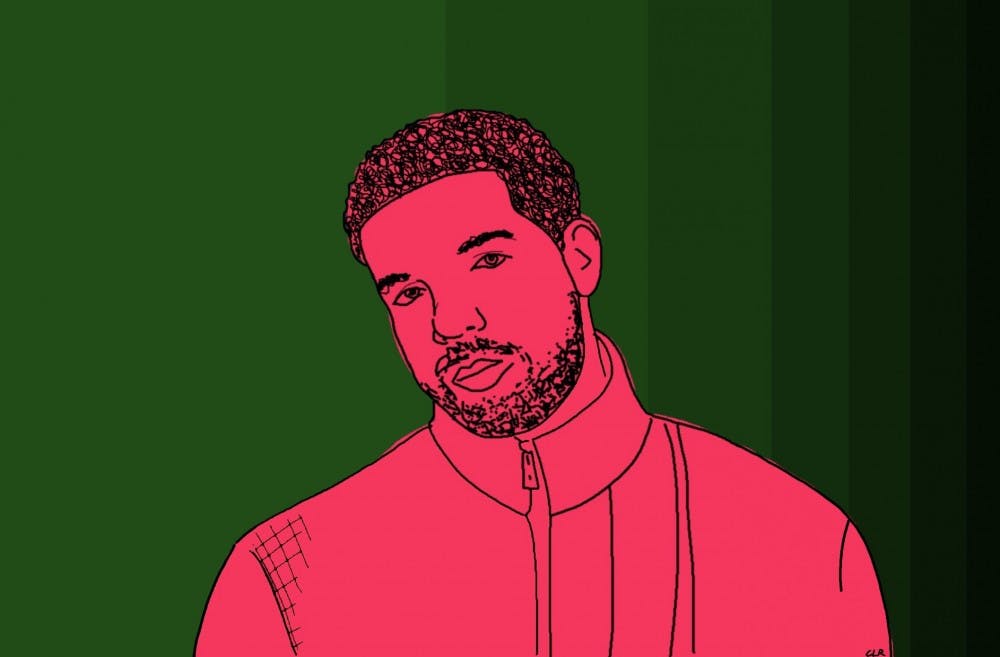Drake might be a polarizing figure, but you can’t deny that he’s everywhere. From Sprite commercials to courtside seats at Toronto Raptors games, the Canadian rapper has been one of the most popular and recognizable figures in hip–hop for years. So when Drake dropped More Life and described it as a “playlist” in late March 2017, it was bound to make headlines. And despite some critics lambasting the use of the term “playlist” to describe what is essentially an album, the music itself was mainly met with a positive reception. For many, at least, this is because Drake managed to incorporate a multitude of sounds and subgenres in the playlist that were far more diverse than Views or If You’re Reading This, It’s Too Late. This isn’t to say More Life is superior to either of those albums, but I would make the argument that More Life, albeit too long a “playlist,” has a wider range of sounds than any of his previous works except perhaps Nothing Was the Same. From “Free Smoke” to “Passionfruit” to “Madiba Riddim,” More Life capitalizes on a vast array of influences and sounds in modern music.
“Free Smoke”, the booming opening track on the playlist, does an excellent job sampling Australian band Hiatus Kaiyote’s 2015 song “Building a Ladder.” The 35–second or so introduction throws you off when you’re listening for the first time—I expected what followed to be closer to “Weston Road Flows” (off Views) than the bass–bumping track that would come after Drake’s words “And more chune for your headtop/So watch how you speak on my name, you know?” Clearly drawing on trap and mixtape–style influences, Drake opened More Life with a reminder that he can still provide the braggadocios rap over heavy–hitting beats many fell in love with on If You’re Reading This, It’s Too Late.
“Passionfruit” offers an equally appealing (if not more appealing) sound that couldn’t be more different from “Free Smoke.” The smooth, almost tropical–sounding song comes from the producer Nana Rogues. “Passionfruit” isn’t just a departure from “Free Smoke” in sound, but also in lyrics, as Drake goes to his more emotional side to address a long–term relationship, singing, “Listen/Harder buildin' trust from a distance/I think we should rule out commitment for now/'Cause we're fallin' apart.” Passionfruit is one of Drake’s most popular songs, and for good reason. The production complements Drake’s sing–rapping ability perfectly, as he finds a way to ride the soft beat while keeping pace and emotion.
“Blem” is a whole different ballgame yet again. Continuing his Carribean–influenced theme from previous song “Madiba Riddim,” Drake employs the use of the word “Blem” (Jamaican slang for being high on mind–altering substances) to describe his inclination to share his uninhibited thoughts (due to being fucked up). While “Blem” is certainly more focused on a relationship than “Free Smoke,” I wouldn’t exactly call it an overly emotional or romantic song. Drake discusses bringing a girl to the islands, once again likely referencing the Caribbean as an influence for the song.
If “Blem” is an ode to Drake’s Caribbean influences, “KMT” is one to his UK influences. Drake gives legendary English grime artist Skepta an interlude on More Life and recruits British rapper Giggs on “KMT,” which clearly derives some of its lyrical content from UK rap. The song mostly focuses on the drug game, as Giggs raps, “I was pushin' that dark shit, pushin' that charcoal/Now this is that big bad, this is Gustavo.” However, Drake has come under fire for appropriating foreign music, as More Life very clearly draws heavy influences from the UK and Jamaican music scenes.
Whether Drake has a right to succeed off other regions’ signature sounds is up for debate, but it is clear that More Life has, at the very least, created some memorable songs and stimulated a greater discussion about the role of regionally–inspired music in chart–topping albums. As a collection of songs with background beats ranging from trap to tropical, Drake has managed to craft a musically diverse playlist in More Life.







